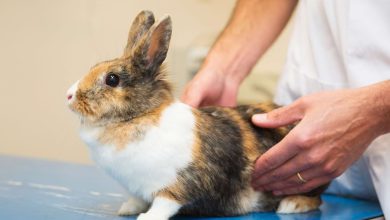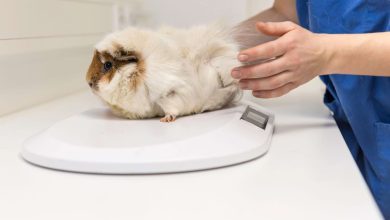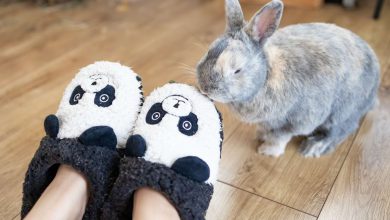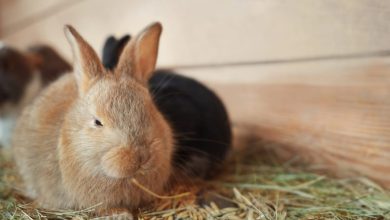Pet Mice Lifespan & Mice Age to Human Age Chart
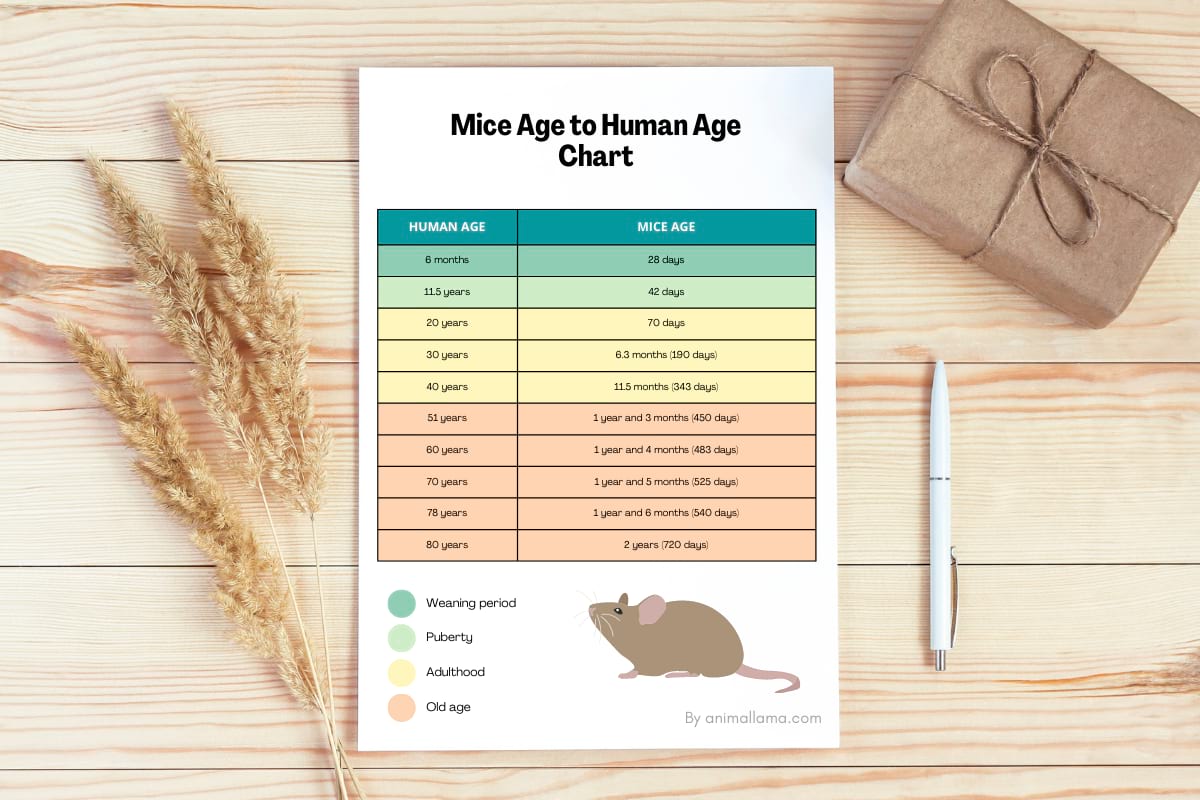
One of the main downsides to keeping pet mice is that they don’t live very long. You can expect to enjoy the company of your pet mice for up to 2 years on average.
Fancy mice reach adulthood as early as 2 months of age and typically start showing visible signs of old age at around 15-18 months.
Let’s look at the typical lifespan of pet mice and how their age translates to human age!
Pet Mice Lifespan: How Long Do Pet Mice Live?
Unfortunately, pet mice (which belong to the Mus Musculus species, also known as the common house mouse) have a very short lifespan, shorter than most domesticated pet rodents. On average, they live 12-24 months as they are susceptible to a wide variety of health issues, such as respiratory infections and tumors.
They may live shorter or longer, depending on many factors, mainly their genetics.
They have a higher chance of living longer if:
- they were bred well – getting your pet mice from a reputable breeder who breeds for health instead of breeding mills, or pet shops can positively impact the health and longevity of your pet mice.
- they are fed a healthy diet – as with humans, mice who eat healthily are less susceptible to a wide variety of health issues, including obesity and everything else that comes hand in hand with carrying extra weight.
- they are getting enough exercise – mice kept in small cages with nothing to do will get more stressed and won’t get the needed exercise to stay healthy. Provide a spacious cage with lots of toys and enrichment to keep your mice interested in life.
- they live in clean conditions – mice have sensitive respiratory systems, so keeping them in unhygienic conditions can cause serious and potentially deadly health issues fast. Always use safe, unscented, and non-dusty bedding to prevent respiratory irritation in your pets.
- they have timely access to vet treatment – the sooner your pet is taken to the vet after noticing the first signs of illness, the higher the chance of recovery.
Taking good care of your pet mice can help extend their lifespan, but unfortunately, it can’t compensate for bad genetics. A mouse can go over the rainbow bridge young even if they received the best care; there is nothing an owner can do about it.
Mice Age to Human Age Chart
Have you ever wondered how the age of your pet mice translates to human age? If your mouse is 4 months old, how old is that in human years?
You might’ve heard that 1 human year translates to 9 mouse days. But the calculation is a bit more complex than that. Each period of your pet’s life equates to a different number of human days because mice develop and reach sexual maturity much sooner in relation to their lifespan compared to humans.
After researching available scientific papers on the topic, I’ve put together a mice age to human age chart, so you can easily check how old your pet mice are in human years!
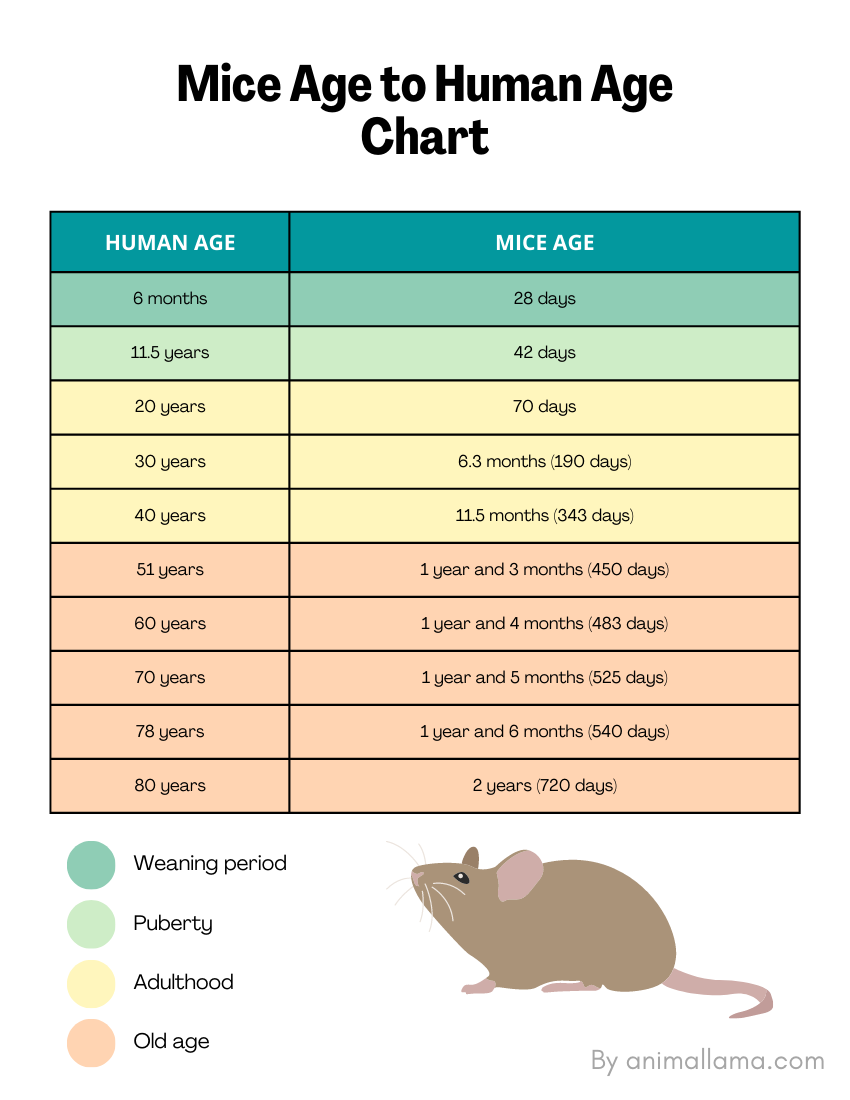
If you want to download this and many other printables we have in our Library, make sure to subscribe to our newsletter to get access!
Mice Life Stages Explained
Let’s go over the different phases mice go through and how they relate to humans.
Weaning Period
When baby mice are about 3-4 weeks old, they are no longer fed by their moms and have to start eating and drinking by themselves. While weaning, baby mice become more active and strong, their eyes open, and teeth and fur develop. In comparison, human babies usually start eating solid food and drinking from a cup when they are around 6 months old.
Puberty
The typical signs of puberty in mice are changes in the female reproductive system, including the development of the vaginal lining and onset of the estrous cycle (that’s a rodent version of a menstrual cycle), and changes in the male reproductive system, including separation of the foreskin from their dangling bit.
Puberty in mice starts at around 6 weeks of age, and they can start reproducing at 6-8 weeks. That’s why it’s important to separate males from females by that point to prevent unwanted litter.
Adulthood
Mice reach sexual maturity at 8-12 weeks of age – an average of 10 weeks. In adulthood, mice also reach their normal weight, 20-30 g for adult males and 18-35 g for females. This period is compared to the period in humans when the growth plates in the scapula fuse, which marks adulthood onset in humans. This happens when we’re around 20 years old.
Reproductive Senescence (Start of Old Age)
Reproductive senescence is the reduction in fertility that happens due to age-related decline. Menopause in women is the hallmark of reproductive senescence in humans and happens when women are approximately 51 years old. In mice, this process typically begins around 15 months of age.
Post-senescence Phase
In this phase, the biomarkers of old age in mice are very visible. Post-senescence phase comes at around 18 months of age in mice.
FAQs
It’s common for mice to cuddle or bury their deceased companion.
In rare cases, if your pet mice don’t feel completely safe in their home, they may resort to eating the body to prevent the smell from attracting predators. This is a natural instinct to protect themselves and their fellow mice from potential threats.
Final Thoughts
Mice make wonderful pets for people ready to handle all the pros and cons of keeping mice as pets. One of the biggest downsides of having pet mice is that they don’t live long, which can break your heart. But the joy they bring during the time spent with us is well worth it, in my opinion!
Sources used:
